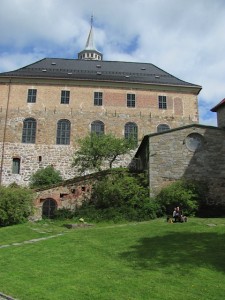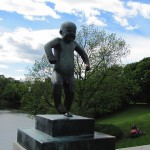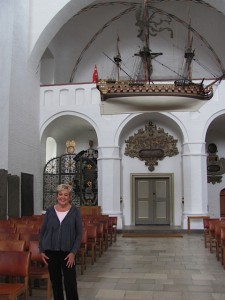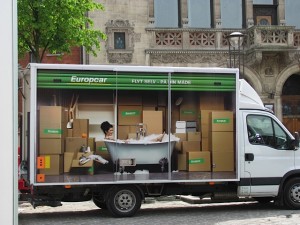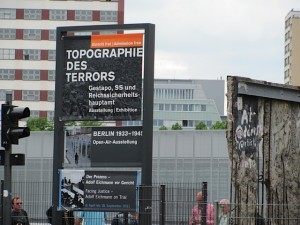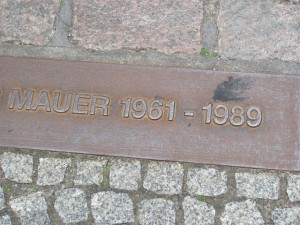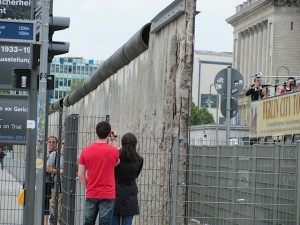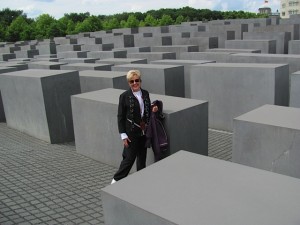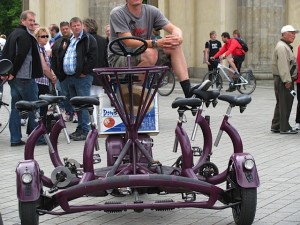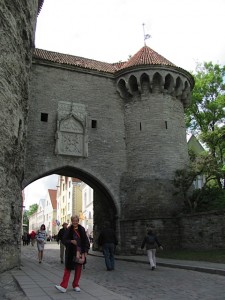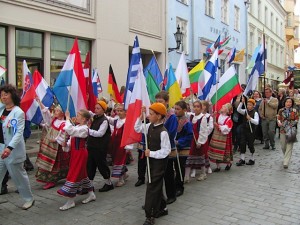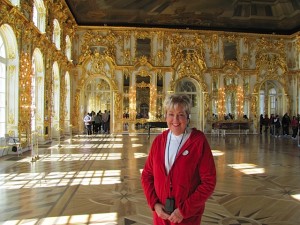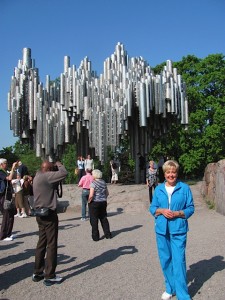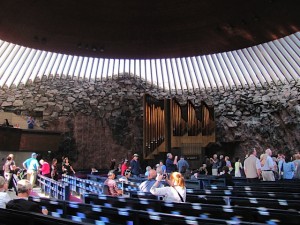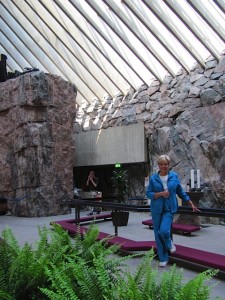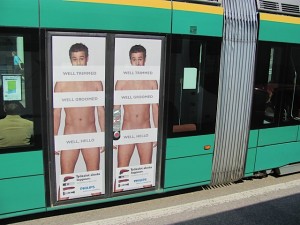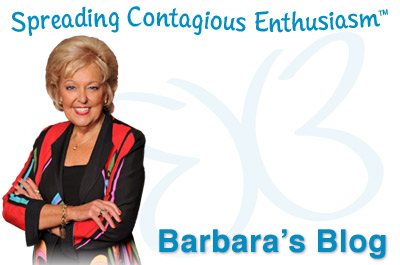BALTIC SEAS ADVENTURE – May 23- June 4, 2011
Princess Cruise Line
Ship: Emerald Princess
Travel Buddy: Nancy Cobb, a dear friend from Illinois, has traveled with me before to Venezuela, Antarctica, India, Thailand, Viet Nam, Argentina, Uruguay and Brazil. We really enjoy each other’s company and as we often say, “We each are blessed with different skills!” Nancy is an early riser and takes care of most of the details, but she needs me to help her find all the things she loses! I am the messy one who over packs and spreads out all over, but dear Nancy puts up with me! However, I am also the documenter and the one who remembers all the goofy things we hear– I remember the short term things and Nancy remembers the long term ones, so we make a good team! We both enjoy learning, meeting other people, and adventures, so we have become good travel buddies.
The Cruise Line: This was my second Princess cruise, and although we were not bothered by the over 3000 people on board this huge ship, both Nancy and I much prefer the smaller Oceania ships. Many of the staff on this cruise line were accommodating, but also a number of them were snippy and not very helpful, and it often took 5 – 10 minutes for anyone to answer the Passenger Services line. However, the food was excellent (we had chateau briand and lobster tail as well as all kinds of fresh fish and even one afternoon a hamburger and French fries!), and the ship was in perfect condition. Arrival, though, was quite difficult because we had to sit in a very uncomfortable tent for over 3 hours waiting to get on the ship. After an all-night long flight, we all simply wanted to get to our rooms and take a nap! Princess could have done a much better job with these arrangements.
The Itinerary: This was a WONDERFUL itinerary, and we loved every place we visited. Each city had its own character, and we particularly want to come back to Stockholm and Oslo and spend more time. Our only suggestion would be that it would have been nice to have a quiet day after St. Petersburg to regroup. As it was, we really had only one day at sea and that was when everyone tried to catch up on their sleep from the overnight flight. Also, the time in Stockholm was only a few hours, and we would have liked to have had more time to explore there. All in all, it was a rather exhausting trip since we were touring from early morning until late afternoon most days; however, every stop was a delight.
The Excursions: Two of our guides were excellent, but we were quite disappointed with two of the others. One stopped the tour an hour earlier than we had paid for, and the other just did not know her history well and was too soft spoken for us to hear much of the time. The highlight for us both was the two days we spent in St. Petersburg as well as the Folklore Show there. We discovered that many people had arranged for their own private tours at much less the cost than those on the ship, so this was definitely a learning experience for the next time. They recommended cruisecritic.com and vacationstogo.com to find out about private opportunities in each country ahead of time. Also, we found that Princess will help with private arrangements if you call them. We felt that a good travel agent should have been aware of other possibilities and helped us with this ahead of time as the people who were with private guides had much more extensive and exciting experiences. However, we still loved our trip and would highly recommend it to others.
The weather: We were extremely blessed with the weather on this trip. Other than our arrival in Copenhagen which was cold and one afternoon in St. Petersburg, it was bright and sunny and over 70 degrees almost every day. We were told that in St. Petersburg, the “City of Rains,” and in Helsinki, they only get about 30 – 60 sunny days in the whole year, so we could not believe our good fortune!
May 23—Travel
I left from home at 10:30 am, arriving in Tampa for a 2:00 pm flight. I flew to Washington, DC on United and then boarded SAS for an overnight flight to Copenhagen. We arrived in Copenhagen at 7:00 am, boarded a bus for the ship and arrived about 8:3-0. Then we had to sit in folding chairs in a tent at the dock until 11:30 am when we could finally board the ship. I had a quick lunch and then came back to the room for a nap. Nancy arrived soon after.
May 24 – Copenhagen, Denmark (My birthday!)
Unfortunately, because we had to wait to get on the ship until almost 11:30 am and then the ship sailed soon after, we only got to experience a bit of Copenhagen on the drive from the airport. If we had thought ahead, we could have come in a day early and stayed a day later, but I guess that will be another trip! 😉
May 25—OSLO, Norway
Oslo means “City of the Gods,” and it certainly is! Henrik Ibsen is one of the most famous natives of Oslo which is the 6th largest city in Europe. Oslo was settled by the Vikings, and Norway got its name since the Vikings came from Normandy. The heart of their culture was ships, particularly the long boat. We learned that when a Viking died, they would place food, their tools, weapons, and a slave girl, who had volunteered for the “honor,” into their boat and burn it. It certainly made for a grisly death for the volunteer! Of course I had to buy Viking hats for the little grandsons. 😉
We began the day on our own by crossing the street and exploring the castle that we could see from our ship. One of the best things about this trip was that the ship was often docked right near the city sights, unlike other cruises we have been on. Towering above the Oslo fiord, this medieval fortress constructed to protect the capital of Norway during the reign of Hakon V, dates back to 1299. Unfortunately, the castle, which was the Nazi headquarters in WWII, was closed for a ceremony so we could not go inside, but we enjoyed walking around it and taking pictures.
We then walked to the nearby Resistance Museum which told the story of Oslo’s participation in the war against Hitler. We were impressed with how tastefully and poignantly designed the museum was. We learned a great deal about the Danish resistance to the Nazis and were touched with all the heroic stories of how the people of Norway banded together to help the Allies defeat Hitler.
We then began a bus tour to the following sites:
We passed the City Hall where the Nobel Peace Prize Ceremony takes place and the hotel where the honorees stay. We learned about the Opera House built in 2008 which resembles two icebergs colliding. The guide said that skateboarders love it!
We then visited the lovely Vigeland Sculpture Park which showcases the life work of renowned sculptor, Gustav Vigeland. There are over 200 sculptures representing the complete human lifecycle. In 1921 Vigeland was given a free home and a studio with the stipulation that he would donate all his work to the country of Norway. At the entrance is a statue of Vigeland himself and it has the distinction of being the only sculpture in the park which has clothes on! Of course the nudity of all the statues caused quite a bit of controversy in his day.
Many of the statues depict parents, especially fathers, and children in very loving poses. We learned that Vigeland was a terrible father, rarely home, and married several different times, so one of the theories is that these sculptures were a way of assuaging his guilt. One of the most famous ones is “Angry Baby” which portrays a temper tantrum that we have all experienced at one time or another! The fountain depicts all the stages of life in a huge circle and is titled “Eternity” to represent that life has no beginning and no ending.
Then we traveled to Homenkollen. It is the cradle of ski jumping, the site of the 1952 Olympic ski-jumping competition, and will hold the competition again in 2011. It is 64 meters tall. Nancy and I were some of the only ones adventurous enough to try the simulator which allowed you to actually experience jumping off the huge lift and then take a daring run with the Olympic champion down the ski run to the end. Needless to say, it was a hair-raising experience and our voices were definitely heard below!
Our final stop was the National Gallery. It is famous for the works of Edward Munch. HIs most famous painting is “The Scream” which she said was the most copied painting in the world. He and Vigeland had quite a history. They started out as friends, sharing expenses, a studio and even a woman, but later became lifelong enemies.
Trolls are one of the national symbols of Norway. The legend goes that they can never see daylight, so the little children are frightened of them. Children are always baptized early so that the “Changer” troll does not steal them away! The largest troll has 5 heads and a pine tree growing on his nose. They usually live in lakes. “NIssa” is their name for Santa Claus. He lives in barns and the children put out porridge for him at Christmas. Children go to school from age 6 – 16, then 3 years at high school and another 3 years at University. All education is FREE!
May 26—Aarhus, Denmark
We decided to spend the day here on our own, so we walked to the large church first. It was interesting that they said every church in Estonia needed to have a replica of a ship somewhere in the sanctuary since that industry provided the livelihood for most of the people.
We stopped at McDonalds for a coke and were impressed to see all the people outside with their Ipads using the free internet.
Later we walked through the town square and then happened upon the Women’s Museum which was a beautiful tribute to the women of Denmark. We were fascinated with a room that contained “lingerie” from several hundred years as well as a children’s room with a huge cloud pillow on the floor for them to lie on and all the tiny furniture and birds were upside down on the ceiling. Both Nancy and I lay down on the pillow to get the delightful perspective – what fun! It was also interesting to note that all the displays were open, and yet nothing was damaged or stolen, unlike what I fear would happen in America!
The museum demonstrated the evolution of women’s rights, but what we were intrigued by was that this evolution really followed a very similar pattern as that in the US –just with different timing. Since women play such a dominant role in the lives of the children, they used this venue to also help children understand the importance of freely speaking up for themselves and using their creativity. The museum utilized very interactive displays and games to help them learn about how children lived in the past so they could appreciate what wonderful possibilities their lives can have. They have many children’s groups visit and even encourage bringing the babies, especially to experience the “cloud room” we mentioned earlier.
These were some funny signs we saw in Aarhus:
May 27—Warnemunde, Berlin
We started out with a three hour train ride from Warnemunde to Saschsenhausen Concentration Camp. Originally the concentration camps were really for slave labor – prisoners, Jews. homosexuals, Jehovah’s Witnesses and Russians—as opposed to the death camps. Many deaths did occur there, but they were from illness and malnutrition. Each group was separated according to their “status” with the Jews being the lowest and each had a color that they had to wear according to their group.
Conditions were deplorable. They had an infirmary but no medicine or doctors. The sole purpose of the infirmary was simply to get them more food so they could go back to work. They stayed in dormitories with no heat and three to a bunk. They had a crematorium to get rid of the bodies as well as a small gas chamber for “research” to test chemicals for the extermination camps.
The camp itself was shown as a model camp to the rest of the world, part of the Nazi propaganda, yet many things were not shared with the public. The camp was built for 6000 but it housed as many as 20,000 at times. What amazed us most was that there were only 54 guards for this entire group. One of the horrible tasks they had was to walk 25 miles a day on various surfaces to test the rubber for the soles of shoes. They had role call several times a day. and they often had to stand for hours. At the gate of the camp ironically there were an inscription, “Work is freedom.”


After the Nazis were defeated, the camp was used for Russian prisoners, and one of the saddest things of all was when the Russians were finally freed and returned home, the Russian government considered them traitors for conspiring with the Germans and sent them back to the camp. The camp was in active use from 1933 to 1948.
Our guide shared that the Germans are being very open about the war and their responsibility, and most importantly, they are using these premises to educate young people about what can happen if you don’t stand up for your rights and the rights of others. Although the whole Nazi movement was designed around total segregation, today the message the Germans want to emphasize is one of integration and equality for all. The message to students, then, is instead of focusing on the tragedies, instead learn from those heroes who were a part of the resistance and helped bring an end to this terrible regime.
We then boarded a bus to lunch and then on to Berlin. Our first stop in Berlin was the Brandenburg gate. Constructed in the 18th century as a symbol of peace, it gained notoriety as a symbol of a divided city during the Cold War, the East Communist territory and the West free.  We visited the remains of the Berlin Wall and saw the bricks that marked the dividing line where the wall used to be going down the middle of the street, forcing the East Germans to be in their own prison. Our guide told us that 365 people had been shot trying to go over the wall until it came down in 1981. The Topography of Terror Museum was beside what was left of the wall, and we can only imagine what went on there. It was very moving to actually be in that spot we had heard about all our lives.
We visited the remains of the Berlin Wall and saw the bricks that marked the dividing line where the wall used to be going down the middle of the street, forcing the East Germans to be in their own prison. Our guide told us that 365 people had been shot trying to go over the wall until it came down in 1981. The Topography of Terror Museum was beside what was left of the wall, and we can only imagine what went on there. It was very moving to actually be in that spot we had heard about all our lives.
We also visited the Holocaust Memorial made up of 1127 huge rectangular blocks of stone to memorialize the six million Jews murdered by the Nazis. Again, it was a deeply touching experience.
Because the Germans did not have much money to rebuild after the war, there was not much emphasis on architecture and there were obvious patches on buildings such as the Parliament House that were remnants of the bombing. Our guide told us that they find unexploded bombs in Berlin at least once a week, another reminder of the horrible war. We were surprised that Berlin was as nice a city as it was, and we both said it was a place we would go back to.
May 28—At Sea
We were so glad to sleep in and have a day of rest. We went to the gym and we each had a massage and Nancy went to a session on “Detoxing your Body.” The food has been delightful, and we have met some lovely people from all over the world.
May 29 – Tallinn, Estonia
This day we decided to just explore the city on our own, so we walked into town and looked for the sights we had read about. It was nice to have a more relaxing time, and we were enchanted with the darling little town. Neither of us had high hopes for Estonia, but it turned out to be one of our favorite places. The buildings were charming, and we even saw a parade with marching bands and small groups of people in their native area costumes. We took lots of pictures, of course. Amazingly, Skype was founded here in this tiny village! We were told that they are among the most highly technical cities in the world and are often used for test sites for new technology.
We spent much of our day there shopping! There were great bargains at the little market stalls. I bought two sweaters, two scarves, an amber necklace (for which the Baltic is famous), two wool hats for my daughters, two Viking hats for the grandchildren, and several sets of Matryschka or stackable wooden dolls. Nancy and I had the best lunch at a medieval tavern – light cinnamon beer, mushroom soup, bread, and cheese. We chuckled at the “toilette” which was also medieval – a wooden throne with a hole in it, water that had to be poured out of a bucket, and all was lit only by candles! Be thankful for indoor plumbing!
May 30 – St. Petersburg, Russia, Day One
On May 27, 1703, the city of St. Petersburg was founded. It has had various names over the years, including Petrograd and Leningrad. In 1991 it was renamed St. Petersburg and is made up of 42 islands. Because Peter the Great wanted his city to be the “Venice of the North,” he had many canals created. The land the city was built on was marshy, so anyone who visited the city in those days was required to bring rocks with them – 30 rocks for a ship, 15 rocks for a carriage, and 1 rock if you were on foot! He wanted all the buildings to be painted with light colors because the weather is so dark there.
The Romanovs ruled from 1613 – 1917, the final Czar being Nicholas. He and Alexandra had a storybook love affair even though they had huge differences. She was Lutheran while he was Russian Orthodox, and she had to move to Russia to be with Nicholas. Because the people did not approve, Nicholas crowned himself. He called himself God’s representative on earth and the coronation ceremony lasted for 5 hours!
They had four girls and finally a boy, Alexis, who was found to be a hemophiliac. Alexandra, who was very religious, prayed mightily and tried everything to help her son get healed. She finally turned to a wicked scoundrel named Rasputin and became enchanted by him which turned the people even further against them, and they were finally murdered.
On January 9, 1905, one of the saddest events in Russian history occurred – Bloody Sunday which was really the start of the Russian Revolution. It began as a peaceful demonstration of peasants who came with their families dressed in their Sunday best to request an 8 hour working day. However, the soldiers began to fire on them and hundreds were killed in cold blood. Strikes began and over 400 peasant leaders were executed in one month.
The Boshevik party was formed, led my Lenin and the Red Guard in 1917. They occupied the Winter Palace and exiled the family to Siberia. (Read the novel “The Kitchen Boy” to read all about this time in the family’s life.) Finally, the whole family was brutally executed, and they are buried in the Church of the Savior of Spilled Blood in St. Petersburg.
We spent the first morning at St. Catherine’s Palace. Finished in 1670, it has 1059 rooms and was started by Elizabeth, who was a great party girl and spent ALL the country’s money. It is light blue because that was the color of her eyes! However, she died before it was finished, so Catherine finished it and thus, the name. The outside perimeter of the palace is made up of dozens of small guest rooms since often her parties would last for several days. Each guest needed 2 to 3 servants to care for them. Because there were no toilets in those days, we were told that they had to “do their business” on the floor, and then the servants were tasked with cleaning it up. Yuk!!!!!! If there were no rooms available for them, the extra guests just slept on the floor.
The palace was so opulent that it was almost sickening. The amber room alone cost $11 million dollars to restore after the damage from the war, so one can only imagine what it cost when it was built. The entire room—walls, furniture, lamps, etc.—was completely made of amber which is a precious stone the Baltic is famous for. The palace was bombed, burned, and looted during the war, and during the restoration, they found four unexploded bombs in the rubble. The final restoration was completed in 2003.
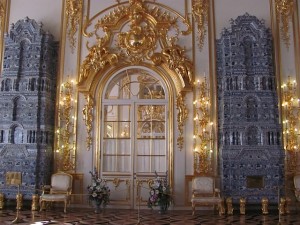
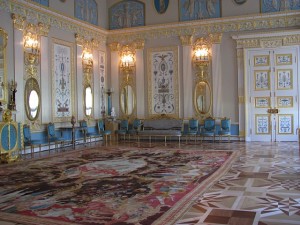
We fully understood why the Russian people rebelled—they were starving yet Catherine was spending money without any regard for her people. During the Siege of Leningrad which lasted for 3 years, while the aristocracy were living in the utmost splendor, the common people had only 4 ounces of bread a day and that was mostly made from glue and paper pulp mixed with sawdust and water. They tore the wallpaper off the walls to have something to eat and boiled leather boots and shoes so that they could drink the water for some kind of nourishment, and yet thousands still died from starvation. Before the revolution there were 3 millions people in the city; afterwards there were only 1.3 million living. (We learned that every January 27 at 9:00 pm, the residents turn out all the lights and light a candle in memory of those who died.) Meanwhile, the royals lived in palaces with total extravagance.
It was said that Catherine, for example, had 25,000 dresses and never wore the same thing twice! She was said to change clothes at least four times a day. One of the furnaces in her room was made up of tiles from Europe that contained the latest dress styles, so since Russia was isolated at that time, that was how she kept up with the latest fashions and how she selected her dresses.
She insisted that all the women who came to the palace had to wear diamonds! The palace had a huge reception hall and many waiting rooms. Based on the visitor’s status, they were placed in a suitable room, always by themselves, to wait to be introduced to the Czarina.
The gardens of the palace were beautiful, and we took many pictures. 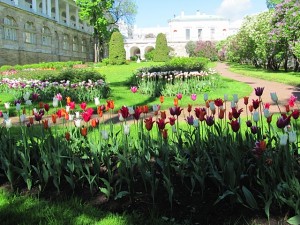 We especially loved the story of the “Island of Love!” Catherine loved parties and men, it was said, so she was known for her affairs and even built her lovers their own palaces. When several of them lost them gambling, she simply bought them back and returned them to the lover! Afterwards, we had only a few moments to shop in the tiny stalls there. My favorite souvenir is a Catherine the Great doll. She did not care for her people, but she certainly knew how to live the “good life,” although disgustingly so! 😉
We especially loved the story of the “Island of Love!” Catherine loved parties and men, it was said, so she was known for her affairs and even built her lovers their own palaces. When several of them lost them gambling, she simply bought them back and returned them to the lover! Afterwards, we had only a few moments to shop in the tiny stalls there. My favorite souvenir is a Catherine the Great doll. She did not care for her people, but she certainly knew how to live the “good life,” although disgustingly so! 😉
At lunch we were treated with typical Russian music, and we purchased one of the wooden “clacker” instruments for the grandchildren, something I had never seen before, called a Trishsholka.  Also, they gave us each a jigger of Russian vodka and told us to take a deep breath, blow out the air and CHUG! We also learned the story of the Matryschka stacking dolls. A young man was so in love with a girl that he put her face on everything he created. Unfortunately, she married someone else, but the dolls became a Russian tradition. She also shared that Baron Storganoff, who was one of the most successful persons in St. Petersburg, used to invite 50 people a day to his palace for lunch. Anyone could come who was well-dressed.
Also, they gave us each a jigger of Russian vodka and told us to take a deep breath, blow out the air and CHUG! We also learned the story of the Matryschka stacking dolls. A young man was so in love with a girl that he put her face on everything he created. Unfortunately, she married someone else, but the dolls became a Russian tradition. She also shared that Baron Storganoff, who was one of the most successful persons in St. Petersburg, used to invite 50 people a day to his palace for lunch. Anyone could come who was well-dressed.
We followed this visit with a city tour. Our first stop was the naval submarine, the Aurora, near the Naval Museum. Another stop was at the first bridge built in St, Petersburg which was flanked by huge lighthouse towers with a flame on the top of each one. 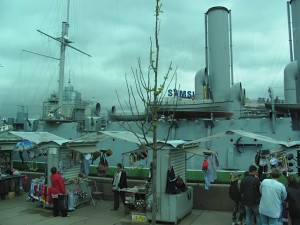 Then we viewed St. Isaacs Cathedral which the architect designed when he was only 20 years old and then spent the next 40 years of his life finishing, and finally, we stopped at the Church of the Savior of Spilled Blood and the nearby market.
Then we viewed St. Isaacs Cathedral which the architect designed when he was only 20 years old and then spent the next 40 years of his life finishing, and finally, we stopped at the Church of the Savior of Spilled Blood and the nearby market.
That evening we attended a special Folklore show at one of the palaces. We were overwhelmed with the quality of the music and the dance. The chorus was from the militay dressed in full regalia, and all the words were in Russian so we couldn’t really understand what they were saying. It made us more aware of how people feel in the US who do not speak English. It truly gave us a flavor for Russian culture and spirit. It was exactly what we expected but even better because they were so accomplished in their acrobatics and footwork and the costumes were exceptional. It was interesting that all three soloists were men, and the really talented dancers were men as well. The women were beautiful but just not showcased as the men.
May 31—St. Petersbug, Russia, Day Two
We spent the morning at the Hermitage or the Winter Palace. It is made up of five buildings with six departments and over 1000 rooms. It was built for Elizabeth, the daughter of Peter the Great and took 8 years to build. Designed by Rastrelli, it was designed in the Baroque style, and the first resident was Catherine the Great who was more enamored of the classical style.
The treasures Catherine collected there are beyond imagination! She confiscated many of them from the Russian nobility during the revolution. Our guide told us that there were over 3 million pieces in the collection and that if someone spent one minute looking at each one, it would take seven years 24/7 to view everything! Nicholas I, the great grandson of Catherine, finally opened the museum to the public in the mid-19th century. During WWII, the Director evacuated over 1.200,00 works of art to Siberia to protect them, so many of the great works there were saved to be viewed today. It was very crowded, and we only spent about an hour there, so just enough to whet our appetite to come back again.


Our guide shared much with us about the city. IT is truly a cultural center with over 100 museums and 60 theatres. The Neva River is the center of the city which is made up of 42 islands. 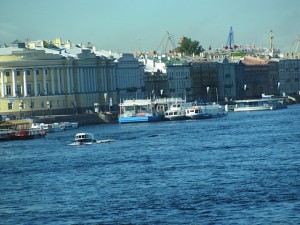 During the reign of Catherine the Great, there were 200,000 residents, but today there are over 5 million. She shared with us two popular Russian sayings: “When you’re single, you’re not complete. When you are married, you are finished!” and “Love is light. Marriage is the bill you pay for the light.” There is an 80% divorce rate in Russia, she said. One of the marriage customs is that the groom must carry the bride over a bridge. Although there are over 100 bridges in St. Petersburg, they always choose the shortest one!
During the reign of Catherine the Great, there were 200,000 residents, but today there are over 5 million. She shared with us two popular Russian sayings: “When you’re single, you’re not complete. When you are married, you are finished!” and “Love is light. Marriage is the bill you pay for the light.” There is an 80% divorce rate in Russia, she said. One of the marriage customs is that the groom must carry the bride over a bridge. Although there are over 100 bridges in St. Petersburg, they always choose the shortest one!
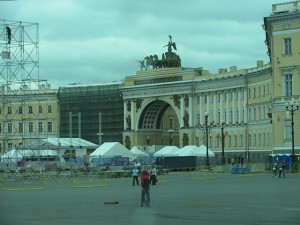
After leaving the group, we toured the Church of the Savior of the Spilled Blood which was probably the most beautiful building in all of Russia. It was made up of bright colors, turrets and domes, and the entire inside was made of many colored mosaics. During a service, they can only stand or kneel-there are no seats. Czar Nicholas and his family were murdered in this very spot and are all buried here.



We had a free afternoon, so we had a wonderful time shopping in the local markets. Interestingly, they all took US cash and bargained and even had change for a $100 bill! We had a typical Russian lunch with crepes tied like a sachet bag and a vegetable salad held together with cucumbers. We also enjoyed Russian beer; however, the service was VERY slow.
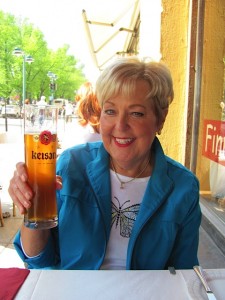
Our Impressions: There seems to be a huge gap between the rich and the poor still in Russia. While the center of the city was absolutely breathtaking, the high rises that the common people lived in were dirty, run down, and often had broken windows. We never saw flowers anywhere around them. The contrast was dramatic and reminded us of the opulence of Catherine the Great and the huge divide even then which ultimately caused the Russian revolution.
We noticed that we saw no motor bikes and hardly any other bikes which we found very unusual for a European city. We saw NO ONE with cell phones, another great surprise, and we always struggled to find any kind of trash can. We learned that starting in September the Russian children will only have 2 hours of each subject a week, and if the parents want them to have more, they will have to pay a fee that would be very difficult for he average Russian family. One note: we have hardly seen any African Americans on this whole trip.
Although our initial impressions were rather negative based on the drab and neglected buildings as we drove into the city, after seeing the beauty of the buildings in the city center, we left with a positive feeling about Russia and its culture. A great of deal of restoration was going on, indicating a concern for their history. I was deeply touched by the irony of growing up with such a great fear of Russia as the horrible enemy (we even had a bomb shelter in our basement), and yet here we were, enjoying their beautiful country just a couple of decades later!
June 1—Helsinki, Finland
Finland is the largest country in Europe, but it only has 5 million people, the same population as the city of St. Petersburg. They have been part of Sweden and Russia until 1917 when they were freed. They currently have a female President and Prime Minister. They can only do two terms and each year they must get two medical reviews to prove that they are capable of leading. The average temperature is 62 degrees, and our day was an amazing 80 degrees. The moose is the national animal.
Their primary industries are shipbuiliding, IT (Nokia was founded here), and paper and pulp. They just finished the largest ship in the world for Carnival and are known for building ice breakers since they are so close to the Arctic Circle. Street signs are in both Finnish and Swedish, and our guide told us there is great rivalry between Finland and Sweden. All education, including university, is free and Finnish, Swedish, and English are taught in their schools. They also have socialized medicine and are concerned about healthy eating and organic growing. There is even a queue to get small plots to grow their own produce. Average taxes are 40% and can be as high as 60%!
Our tour guide shared the difference between the West and the East of the country. The westerners are strict, rigid, organized, and much more focused on business. The easterners are more relaxed, generous, and focused on enjoying life. She said even the grass was cut differently. In the west it is meticulously cut while in the east there can be grass that looks like hay fields!
The first thing we saw was the Sibelius monument which is a series of steel tubes that remind one of an organ although the artist was incensed with that description. Even though she won the design competition, the citizens did not like the monument because it was too modern. We thought it was very striking and the placement in the gardens was lovely. There is a miniature version in the United Nations building in New York City. Sibelius wrote “Finlandia” but it has never become their national anthem.


The second place we visited was the famous Rock Church, Temppeliaukio. In 1969 two brothers decided to build a place to worship where people were close to nature, so they quarried the stone to make a huge hole and then used the stone for the underground foundation of the church. The whole church was built in 8 months. The dome is constructed of 40 miles of copper wire and has slits for the natural light to come through. From above it looks like a space ship! We felt very close to God in the sanctuary.
We then drove to the Senate Square and the Senate Square Cathedral. 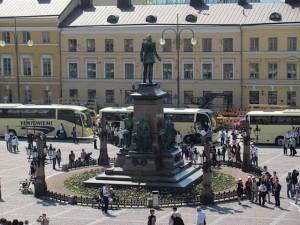 Our impressions of Helsinki were that it was a very clean, relaxed city but did not have a cosmopolitan feel. Design is important, and we enjoyed the outdoor concerts and shopping market where once again their prices were better than in the stores. They had lots of fur, wooden things, knitwear, and much junk. One of our loveliest finds was an older woman who made Christmas ornaments from little cuttings of wood which were like petals. We asked to take her picture.
Our impressions of Helsinki were that it was a very clean, relaxed city but did not have a cosmopolitan feel. Design is important, and we enjoyed the outdoor concerts and shopping market where once again their prices were better than in the stores. They had lots of fur, wooden things, knitwear, and much junk. One of our loveliest finds was an older woman who made Christmas ornaments from little cuttings of wood which were like petals. We asked to take her picture.
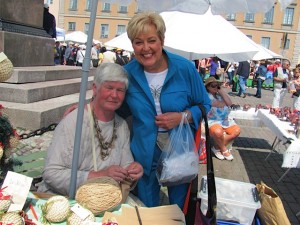
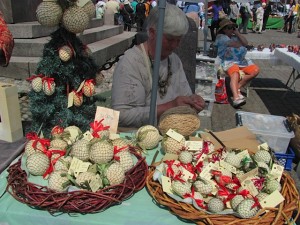
Interestingly, with Nokia headquarters there, we saw almost no one with cell phones. Many of the ladies wore dresses. We ate lunch at a typical Finnish restaurant and both of us tried Finnish beer!
June 2—Stockholm, Sweden
We both absolutely loved Stockhom but wished we had had more time. Both of us would love to come back for a week. It was clean, quaint, and the people all spoke English. They only take the kronor since the public voted against being a part of the European Union. The archipelago is made up of hundreds of small islands, so a local person had to guide the captain both into and out of the harbor to avoid hitting rock. Boats are the primary means of transportation from the islands to the mainland, and there are shuttles that come to stops many times a day. It was interesting, however, that we timed that they only stopped for 20 seconds!
Sweden was mentioned for the first time in 1252 and was settled in the early days by artists. It has 96,000 lakes. One interesting fact is that the Baltic Sea is brackish –half salt water and half fresh. 500,000 people live in Stockholm, 2 million including the suburbs, and 9.2 million in the whole country. The country has one of the highest standards of living in the world. 60% of the land is forest, and they really respect the environment. Although the country was originally Catholic, it is now almost entirely Protestant. Our guide told that us 70% are church members.
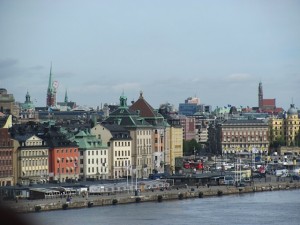
The first place we visited was the Royal Palace, and we were privileged to see the changing of the guards as we arrived. The symbol for Sweden is three crowns, and there are several stories about why. One was for the three wise men who brought gifts to Jesus, and the other was for the three countries that make up Scandiavia—Norway, Denmark, and Sweden. The king, enamored of anything French, chose the North Star as his symbol since the king of France had chosen the sun as his. King Gustav wanted to copy and even outdo the French king, so his palace has 1608 rooms while Versailles only has 1607! It was supposed to take six years to build, but it actually took 60 years because the country ran out of money.
We laughed at the borrowed French tradition that people could be invited to have the privilege of watching the royal family dine, an experience that could take up to 8 hours. In the meantime, they got no food, drink, or even chairs to sit down. What a privilege that they did not dare refuse! In the king’s chambers we learned that they could also be invited to watch the king dress. I asked if it could be both men and women, but she assured us that is was only men! 😉 We were told that they only took baths about once a month, so can you imagine the smell? Interestingly, the king and queen slept in different quarters. Our guide told us that because most of these marriages were arranged, this probably made them happier.
The palace was originally baroque and very dark, but when the architecture in France changed, then it had to be redesigned to “keep up.” One of the main rooms was designed to look like the Hall of Mirrors from Versailles and was quite beautiful. It can seat 150 guests, and it takes 3 servants 2-3 days to get everything ready. The Nobel Peace Prize dinner is held in this room. We also noticed that the frescoes in the ceiling were three dimensional which we had not seen before.
The dining area is still today used to inform the king and princess who will one day take the throne of what is going on in the government. The royalty serves in name only but has no political power. In fact, they cannot even wear the crown. It was interesting that in this palace we were not allowed to take pictures, but both in St. Catherine’s Palace as well as the Hermitage with all their priceless treasures, we could take pictures. Hmmmmmm……
Then we did a walking tour of the Gammla Stan, the “Old City” of Stockholm. It was lovely and quaint with very narrow lanes (no cars allowed nor could they manage to drive through), tiny shops, fountains, and outdoor cafes. Even though Sweden was a neutral country, the guide showed us there were still several remnants of the war. We stopped at the town square which was the site of “Bloody Sunday,” a horrific execution by the Danish king of some of the most powerful and wealthy aristocrats of Sweden. They were brutally shot there and their heads left to roll around for three days!

Afterwards Nancy and I toured the Nobel Peace Prize Museum which was a highlight of the day. It was a creative experience just to be in the museum– one has to go there to understand the unusual and artistic displays. We learned about Alfred Nobel, who made a huge fortune from his discovery of dynamite, and was always a great human rights advocate. Since he had no children, he decided to create a foundation to encourage peace in the world and his will outlined the criteria for the selection of Nobel Peace Prize winners in several different categories. The ceremony for all but the World Peace Prize is always held on December 10, Nobel’s birthday, in Stockholm at the Grand Hotel.

I was especially fascinated with all the memorabilia that has been donated from the many Nobel prize winners, such as a handwritten letter from Albert Einstein, poems written by Tagore in his own handwriting, a wooden carved hippo that inspired the man who wrote the true story about the hippo and the tortoise that befriended one another, and formulas that were written in the scientist’s writing that changed the course of our world (the creation of penicillin, the atom bomb, genealogical discoveries, etc.)
Here are the Tagore poems that I copied from his journal:
“Pick up this life of mine from the dust,
Keep it in the casket of night with your stars,
And then in the morning
Let it find itself among flowers
That blossom in worship.”
Tagore 1923
“Our world is within us. When that is shattered, we have no other,
19/4/23 Tagore
There was also a “Bubble Room” for children to do creative projects.
June 3—At Sea
This was a “catch up” day – getting our bill straight, attending final seminars, and the worst of all – trying (for me) to get everything into my two bags without being overweight in both! 😉
June 4—Copenhagen and travel home
We had to be off the ship at 7:00 am and my flight was not until 12:25, so it was a lot of waiting – in lines, getting our bags from the ship, checking in, through security, another security inside the Copenhagen airport, getting tax refunds, etc. Then after an 8 hour+ flight, I arrived in Newark and had a 6 hour layover there and then another 2 ½ hour flight to get to Tampa. My brother picked me up and we arrived home about midnight, so I was nearly 27 hours without sleep! The following Monday I started feeling rotten and found out today that I have pneumonia – just too many flights and no sleep! I am just glad it happened AFTER the trip….




